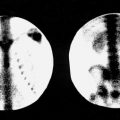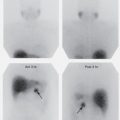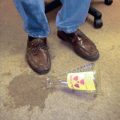Pediatric doses of radiopharmaceuticals ideally should be kept as low as possible. A balance must be achieved between the smaller doses needed in a small patient and the minimum dose needed to get a statistically valid examination in a reasonable time. Simple reduction of an adult dose per unit weight necessitates an extremely long imaging time during which the image may be compromised by patient motion.
Surveys have indicated that doses administered to children and adolescents of the same age and size vary widely, often by a factor of 3 and sometimes more. North American consensus guidelines have been developed in an attempt to limit radiation exposure while maintaining diagnostic quality. The suggested administered activities for 18 radiopharmaceuticals are seen in Table D.1 . Additional guidelines from the 2016 dosage card European Association of Nuclear Medicine are shown in Tables D.2 and D.3 , with more radiopharmaceuticals available through a web-based calculator at http://www.eanm.org/publications/dosage-calculator/ . One should also pay attention to pediatric radiation doses from associated computed tomography scans (see Fahey FH, Goodkind A, MacDougall RD, et. al. Operational and dosimetric aspects of pediatric PET/CT. J Nuc Med. 2017;58[9]:1360-1366).
| Examination | Radiopharmaceutical | Activity Based on Weight [MBq/kg (mCi/kg)] | Minimum Activity [MBq (mCi)] | Maximum Activity [MBq (mCi)] | Comments |
|---|---|---|---|---|---|
| Brain perfusion | 99m Tc-HMPAO (Ceretec) or 99m Tc-ECD (Neurolite) | 11.1 (0.3) | 185 (5) | 740 (20) | |
| Thyroid imaging | 99m Tc-pertechnetate Na- 123 I | 1.11 (0.03) 0.28 (0.0075) | 7 (0.19) 1 (0.027) | 93 (2.5) 11 (0.3) | |
| Adrenal | 123 I-MIBG | 5.2 (0.14) | 37 (1.0) | 370 (10) | See Table D.2 for patients over 10 kg |
| Myocardial perfusion (single scan or first of two scans same day) | 99m Tc-sestamibi (Cardiolite) or 99m Tc-tetrofosmin (Myoview) | 5.55 (0.15) | 74 (2) | 370 (10) | |
| Myocardial perfusion (second of two scans same day) | 99m Tc-sestamibi (Cardiolite) or 99m Tc-tetrofosmin (Myoview) | 16.7 (0.45) | 222 (6) | 1110 (30) | |
| Blood-pool imaging | 99m Tc-RBC | 11.8 (0.32) | 74 (2) | 740 (20) | |
| Gastroesophageal liquid transit and/or emptying | 99m Tc-sulfur colloid | NA | 9.25 (0.25) | 37 (1.0) | |
| Gastric emptying (solids, usually using egg) | 99m Tc-sulfur colloid | NA | 9.25 (0.25) | 18.5 (0.5) | |
| Meckel diverticulum scan | 99m TcO 4 − | 1.85 (0.05) | 9.25 (0.25) | ||
| Bone scan | 99m Tc-MDP | 9.3 (0.25) | 37 (1.0) | See also Table D.2 | |
| Lung scan | 99m Tc-MAA (with 99m Tc-DTPA ventilation) | 2.59 (0.07) | |||
| 99m Tc-MAA (without 99m Tc-DTPA ventilation) | 1.11 (0.03) | 14.8 (0.4) | |||
| Renal scan | 99m Tc-MAG3 (without flow) | 3.7 (0.1) | 37 (1.0) | 148 (0.4) | |
| 99m Tc-MAG3 (with flow) | 5.55 (0.15) | ||||
| 99m Tc-DMSA | 1.85 (0.05) | 18.5 (0.5) | 100 (2.7) | ||
| Cystography | 99m Tc agents | NA | NA | ≤ 37 (1.0) for each bladder filling cycle | |
| Hepatobiliary scan | 99m Tc-IDA | 1.85 (0.05) | 18.5 (0.5) | 37 MBq (1.0) may be considered for neonatal jaundice | |
| Infection imaging | 99m Tc-WBC | 7.4 (0.2) | 74 (2.0) | 555 (15) | |
| Neuroendocrine tumor | 68 Ga-DOTATOC or DOTATATE | 2.7 (0.074) | 14 (0.38) | 185 (5) | |
| Tumor (PET/CT) | 18 F-FDG | 3.7-5.2 (0.10–0.14) | 26 (0.7) | The lower end should be considered in smaller patients | |
| Brain (PET/CT) | 18 F-FDG | 3.7 (0.10) | 14 (0.37) | ||
| Bone (PET/CT) | 18 F-Na-fluoride | 2.22 (0.06) | 14 (0.38) |
Stay updated, free articles. Join our Telegram channel

Full access? Get Clinical Tree






